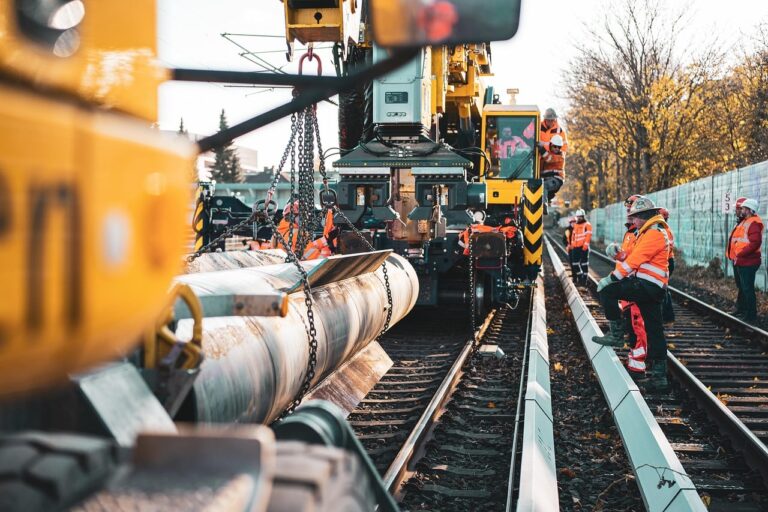How to Control Industrial Noise
A look at how acoustic doors and attenuators can address noise Working in an environment with continuous loud noise can cause health concerns. In fact, around 1 million Australians are estimated to have exposure to dangerous noise levels in their workplace each year. Health issues caused by noise While sensitivity may differ between individual workers,…
A look at how acoustic doors and attenuators can address noise
Working in an environment with continuous loud noise can cause health concerns. In fact, around 1 million Australians are estimated to have exposure to dangerous noise levels in their workplace each year.
Health issues caused by noise
While sensitivity may differ between individual workers, noisy environments can cause a range of physiological and psychological problems, including:
- Hearing loss – Noise-Induced Hearing Loss (NIHL) is the most prominent issue that can arise in a noisy workplace.
- Tinnitus – an ear condition that involves a ringing, buzzing, whistling or similar noise in the ear.
- High blood pressure – Contact with loud or ongoing noise can lead to high blood pressure (hypertension) and an increased resting heart rate
- Headaches, fatigue, vertigo, due to ear/hearing damage
- Digestive issues, like stomach ulcers
- Increased risk of everyday infections (e.g. the common cold)
- Stress, frustration
Your options for minimising industrial noise
Controlling noise levels can be crucial for businesses hoping to maintain a safe working environment. According to Australian law, the maximum safe level of noise exposure allowed in a workplace over eight hours is 85dBA. Yet many manufacturers find themselves considerably above this threshold because of machinery noise.
Fortunately there are options available to minimise industrial noise in your business, ranging from administrative solutions to engineered solutions such as acoustic enclosures and louvres, acoustic doors and temporary noise barriers.
Administrative solutions to industrial noise
One administrative solution that is standard practice in workplaces is to supply workers with personal hearing protection (PPE). However, the National Standard for Occupational Noise points out that engineered noise control methods take preference over personal hearing protection.
Developing an engineered solution requires engaging a company with the ability to test, design, manufacture and install a quality industrial noise control solution. An adequately designed, engineered solution will decrease the level of noise from machinery or workplace situations.
How acoustic doors reduce industrial noise
Solid and heavy, acoustic doors usually feature seals around their edges and have insulated construction to reduce noise and vibrations and prevent them from escaping from one room to another.
An acoustic door usually carries a sound transmission class (STC) or Rw rating, which is a measure of its sound insulation value.
When researching acoustic doors, you may come across residential solutions which are designed for home media rooms and home offices. These residential soundproof doors deliver different results to industrial acoustic doors.
Acoustic doors for industrial noise control tend to be bulkier than residential acoustic doors and feature a higher acoustic rating and better durability. Industrial acoustic doors are ideal for use inside a factory or externally and as part of an acoustic enclosure.
Flexshield acoustic doors are supplied ready to fix and can have the following attributes:
- Up to Rw46 rating
- Heavy sheet metal construction
- Welded hinges to achieve maximum noise control
- 80 mm thick
- Double runner seals
- Customisable to your application
Depending on the application, acoustic doors can be swinging doors or sliding doors. They provide effective soundproofing for access areas and can have panic bars, burglar-proof locks and even peepholes.
Examples of using acoustic doors to minimise industrial noise
1) Acoustic doors create a soundproof studio
Spotlight renovated a Port Melbourne warehouse to use for photography and videography of their merchandise. Noise from the busy Melbourne area was creating distractions, and they approached Flexshield for help.
2) Acoustic doors quieten noisy generator in PNG
Newcrest Lihir Gold Mine needed to reduce noise from the diesel-powered generator while still maintaining access to the machine.
Benefits of Flexshield noise attenuators
Flexshield attenuators use high-quality products that are suitable for many conditions. The casings for the attenuator are quality pre-galvanised sheet steel, joined using locked formed interlocking joints. The acoustic infill is either fibreglass or Rockwool, suitably faced to prevent fibre erosion.
- Duct silencers installed indoors – designed to be maintenance-free
- Duct silencers installed outdoors – given the harshness of the Australian seasons, silencers installed outside should be inspected half-yearly.
- Silencers exposed to corrosive elements – Flexshield uses non-corrosive materials for our products, however, you should speak to your engineer about how to protect attenuators from damage.
- Silencers exposed to high humidity – If you are using your silencer in a high humidity area, make sure you inspect the equipment regularly and remove any rust to ensure the longevity of your attenuator.
To control industrial noise and its effects on your employees, speak to Flexshield today on 1300 799 969.
Related Stories
-

Flexshield’s big month in industrial noise control – on the road from QLD to WA!
Taking action for hearing health and sustainable water management It’s been a busy month for the Flexshield team, and we’ve covered vast distances from Queensland to New South Wales, Victoria, and Western Australia. It’s been… -

The science behind tailored industrial noise control solutions for your project
7 key considerations for addressing noise pollution for your project When you’re managing noise on a job site, it’s important to understand the science behind industrial noise control and how to apply it effectively. Whether… -

World Hearing Day 2025: protecting workers’ hearing with Flexshield
Why prioritising hearing protection is essential for your workforce Each year on March 3rd, the World Health Organisation (WHO) marks World Hearing Day, raising awareness about hearing loss and promoting actions to protect auditory health….